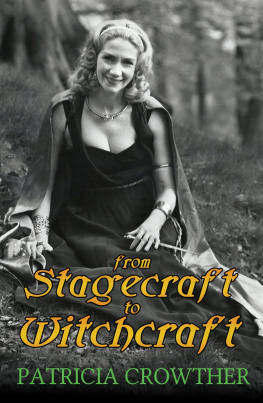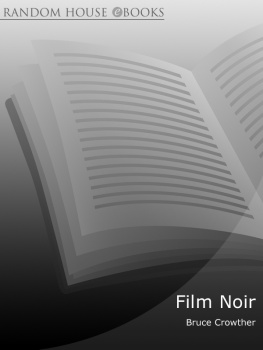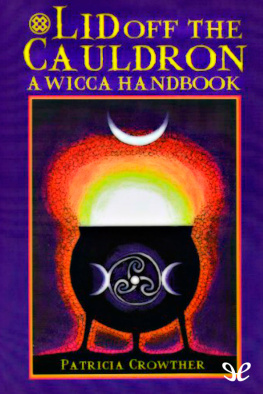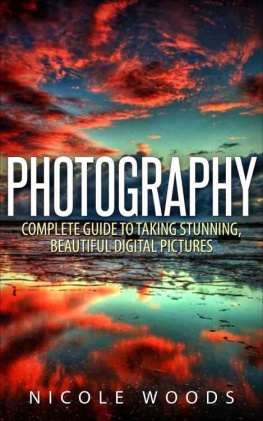Crowther - How pictures complete us the beautiful, the sublime, and the divine
Here you can read online Crowther - How pictures complete us the beautiful, the sublime, and the divine full text of the book (entire story) in english for free. Download pdf and epub, get meaning, cover and reviews about this ebook. City: Stanford;Calif, year: 2016, publisher: Stanford University Press, genre: Romance novel. Description of the work, (preface) as well as reviews are available. Best literature library LitArk.com created for fans of good reading and offers a wide selection of genres:
Romance novel
Science fiction
Adventure
Detective
Science
History
Home and family
Prose
Art
Politics
Computer
Non-fiction
Religion
Business
Children
Humor
Choose a favorite category and find really read worthwhile books. Enjoy immersion in the world of imagination, feel the emotions of the characters or learn something new for yourself, make an fascinating discovery.

- Book:How pictures complete us the beautiful, the sublime, and the divine
- Author:
- Publisher:Stanford University Press
- Genre:
- Year:2016
- City:Stanford;Calif
- Rating:5 / 5
- Favourites:Add to favourites
- Your mark:
- 100
- 1
- 2
- 3
- 4
- 5
How pictures complete us the beautiful, the sublime, and the divine: summary, description and annotation
We offer to read an annotation, description, summary or preface (depends on what the author of the book "How pictures complete us the beautiful, the sublime, and the divine" wrote himself). If you haven't found the necessary information about the book — write in the comments, we will try to find it.
Crowther: author's other books
Who wrote How pictures complete us the beautiful, the sublime, and the divine? Find out the surname, the name of the author of the book and a list of all author's works by series.
How pictures complete us the beautiful, the sublime, and the divine — read online for free the complete book (whole text) full work
Below is the text of the book, divided by pages. System saving the place of the last page read, allows you to conveniently read the book "How pictures complete us the beautiful, the sublime, and the divine" online for free, without having to search again every time where you left off. Put a bookmark, and you can go to the page where you finished reading at any time.
Font size:
Interval:
Bookmark:
HOW PICTURES COMPLETE US
The Beautiful, the Sublime, and the Divine
PAUL CROWTHER
STANFORD UNIVERSITY PRESS
STANFORD, CALIFORNIA
Stanford University Press
Stanford, California
2016 by the Board of Trustees of the Leland Stanford Junior University.
All rights reserved.
No part of this book may be reproduced or transmitted in any form or by any means, electronic or mechanical, including photocopying and recording, or in any information storage or retrieval system without the prior written permission of Stanford University Press.
Printed in the United States of America on acid-free, archival-quality paper
Library of Congress Cataloging-in-Publication Data
Crowther, Paul, author.
How pictures complete us : the beautiful, the sublime, and the divine / Paul Crowther.
pages cm
Includes bibliographical references and index.
ISBN 978-0-8047-9573-9 (cloth : alk. paper)ISBN 978-0-8047-9846-4 (pbk. : alk. paper)ISBN 978-0-8047-9858-7 (electronic)
1. Art, ModernPhilosophy. 2. PicturesPhilosophy. 3. Aesthetics, Modern. 4. Art and religion. I. Title.
N6350.C76 2016
700.9'04dc23
2015030664
Typeset by Bruce Lundquist in 10/14 Minion Pro
I mean by a picture a beautiful, romantic dream of something that never was, never will bein a light better than any light that ever shonein a land no one can define or remember, only desireand the forms divinely beautiful.
Edward Coley Burne-Jones
CONTENTS
ILLUSTRATIONS
ACKNOWLEDGMENTS
was first published as Art and the Reconfiguration of Contemporary Experience, in Aesthetics as Philosophy, ed. A. Erjavec (Ljubljana: SAZU, 1999), pp. 127135. It has been extensively revised and extended for inclusion in the present volume.
INTRODUCTION
Pictorial Beauty and Aesthetic Transcendence
Pictures exist to be looked at. But our wanting to look at them is provoked by how they make things visible, as well as by the stories they tell. This making-visible is of major philosophical interest. It is hardly surprising, then, that in recent years the concept of pictorial representation has been one of the most fruitfully explored areas of philosophical aesthetics.
Nelson Goodmans Languages of Art (1968) was important in stimulating widespread interest in the epistemology and semantics of picturing.
However, there is one aspect of pictorial representation that has received rather less attention, namely, the distinctive basis of pictorial art as art. I emphasize distinctive here because, while pictorial representation has often been included in general theories of art, there has, in recent times, been much less
One might, of course, say that the expressiveness of picturing is sufficiently distinguished from that of other things, simply by virtue of arising from pictures rather than from other things. But my point is that the ontological differences at issue here are also responsible for distinctive aesthetic effects. These give pictorial expression a different character from expression arising in other contexts. Indeed, the way such pictorial works move us is often (perhaps even mainly) through a response to the works overall artistic achievement as such, rather than to specific expressive qualities that might strike us as happy or sad or tragic or whatever. Indeed, when it comes to pictorial artworks of high quality, it is crudely reductive to suppose that their aesthetic significance is explicable using such straightforward expressive terms. Rather, it is the case that, in pictorial art, such expressive qualities are integrated within the distinctive unity of the picture as a whole. (Distinctive unity here means both that which is unique to pictorial art as a medium and the artistic style of the particular work.)
I would suggest, then, that it is worth considering an alternative to expression as a basis for explaining the pictorial works artistic status. The alternative I propose is to focus on the aesthetic grounds of its uniqueness as a medium. This can be done through two moves. The first is a general account of specifically pictorial beauty and how the experience of it can create a sense of psychological completion. The second is more extended (and forms the substance of the present work). It explores how this completion is achieved in distinctive ways, through pictorial beautys modes of aesthetic transcendence. These involve a felt symbolic going-beyond our finite limitations, together with (in some circumstances) a felt communion with the divine. Each artistic medium is able to evoke such transcendence on its own terms. To show what is special about pictorial arts modes of doing so, I start with the general theory of pictorial beauty mentioned above.
Over the centuries there have, of course, been many theories of the beautiful. Most of them take it to involve harmonious unities of parts and whole in sensible phenomena (or in imaginatively intended structures such as literature). But problems arise when it comes to defining the wholes and parts in question, as well as the criterion of harmonious unity between them. The basic idea becomes difficult as soon as one tries to make it precise.
However, this need not be worrisome. The basic idea is flexible enough to allow different varieties of beauty to be made more specific ontologicallyon the basis of different whole-part/aspect relations, or to put it another way, on the basis of the different kinds of objects involved. When the objects are artworks, these varieties will follow the distinctive ontologies of the relevant media (such as sculpture, architecture, photography, literature, and music) and some factors that cut across them. It is when we make beauty specific in such terms that it becomes more philosophically informative.
And so, to the specific case of pictorial representation. This practice does not center on copying. It involves, rather, the creation of physical surfaces marked or inscribed so as to suggest the appearance of some recognizable kind of three-dimensional item or state of affairs. The suggestion is achieved through features of shape, mass, and spatial detail (in terms of how the surface is marked) thatallowing for differences of scale, where relevantare visually consistent with how an item or state of affairs of the relevant kind might appear. They allow us to see the three-dimensional structure as if it were in the surface (a fact made much of in Richard Wollheims work).
Of course, such appearances can be wholly accidentalas when we see such things in cloudsbut in the case of the picture, its way of being created offers cues that allow us to read it as created with the intention of suggesting a three-dimensional content to us. The criteria of such an intention include evidence of a process of physical construction, of the construction being sited on a treated plane surface such as a sheet of paper or a stretched canvas, and/or framing devices whereby the virtual three-dimensionality of the pictorial content is both drawn attention to and demarcated from the real three-dimensional visual world.
The attention in question here focuses on the open, twofold spatial unity of the picture (a notion that will be a veritable leitmotif in the present work). This can be illustrated through a contrast. To comprehend the unity of an event, its constituent parts must be perceived successively in an exact linear temporal order. To perceive them in any other order will jumble the parts and make the event unintelligible as an event. In order to recognize the spatial object as a unity, however, our perception of its parts is not tied to a strict linear order of successive apprehension. One can start at the middle and move to the top, or at the bottom right, switching to the left and then moving upor whatever. The unity of the whole, indeed, is recognized as emergent from cumulative perceptions of its different parts. It has an open unity.
Next pageFont size:
Interval:
Bookmark:
Similar books «How pictures complete us the beautiful, the sublime, and the divine»
Look at similar books to How pictures complete us the beautiful, the sublime, and the divine. We have selected literature similar in name and meaning in the hope of providing readers with more options to find new, interesting, not yet read works.
Discussion, reviews of the book How pictures complete us the beautiful, the sublime, and the divine and just readers' own opinions. Leave your comments, write what you think about the work, its meaning or the main characters. Specify what exactly you liked and what you didn't like, and why you think so.












